Just like Meghan Trainor, The Rolling Stones, and many others, it’s possible to use the B7 chord to bring a punchy yet reflective element to your songs, across plenty of different genres. To do so, though, you first need to be able to answer the fundamental question: What is a B7 chord?
The B7 – which has the notes B, D#, F#, and A – is a dominant 7th chord consisting of a major 3rd, perfect 5th, and a minor 7th. Because it contains a tritone between the 3rd and the 7th, there is a strong tendency for it to drive the progression to the tonic or the first note of the key.
What is the B7 Chord?
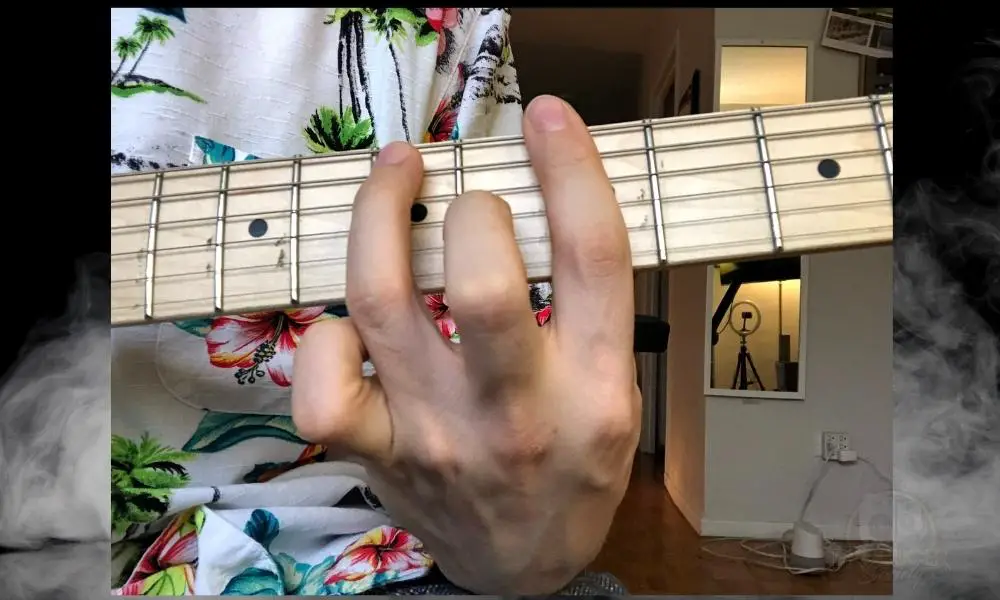
As I said earlier, the B7 is what we refer to as a dominant chord. That means that in terms of intervals, it is made up of the root of the chord, the major third, the perfect fifth, and the minor seventh of its respective key.
With B7, it belongs in E major as the dominant 7th which means there is quite a bit of dissonance which makes it sound like the progression must go back to the tonic.
Just like on the piano, the chord tones for B7 are the following four notes: B, D#, F#, and A. The notes are the same no matter the instrument.
You may have noticed that these are the same four notes as a standard B Major chord, with the addition of the A note.
That’s because all that we’ve done to create the B7 dominant chord is to add the minor 7th note to the B Chord on the E Major scale. The 7th note is A.
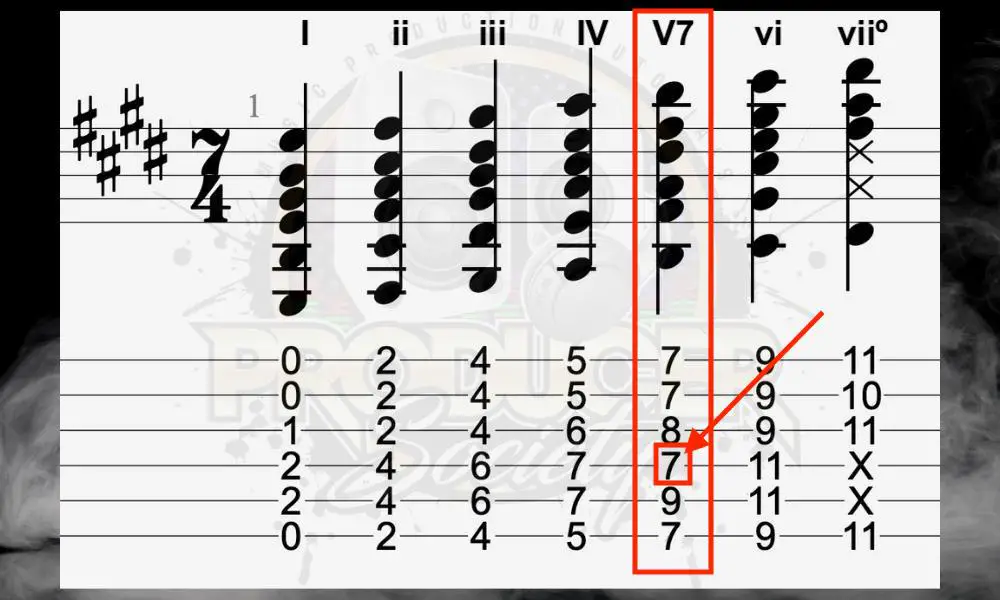
It stands to reason, then, that to create any dominant 7th chord you would add the flat or more specifically, the minor 7th to the major chord.
What gives the dominant 7th chord its funky sound is the minor 7th on top of the major third interval. In other words, we’re combining two different tonalities.
That’s why it sounds the way that it does. But anyway, let’s get into some different ways of playing it on the guitar.
How to Play the B7 Chord: In Open Position
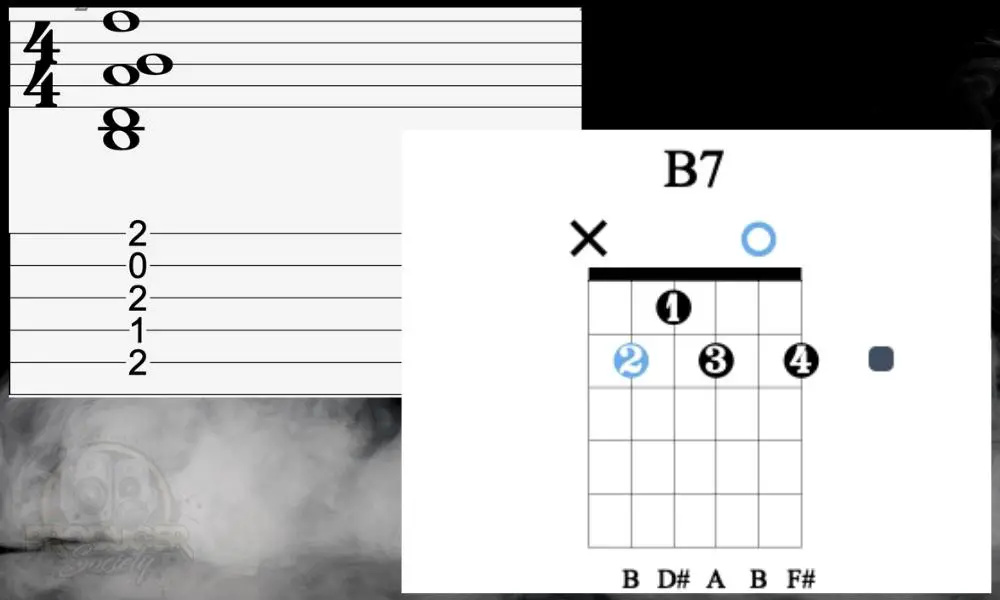
The most full-sounding version of the B7 chord sees you place your index finger on the first fret of the D string, your middle finger on the second fret of the A string, your ring finger on the second fret of the G string, and your pinky on the second fret of the high E string.
All the while, you will be muting the low E and B strings. This shape is movable across the fretboard, meaning that you can utilize the same shape to play C7, D7, and so forth. However, you’ll have to mute the B-string.
6 Different Voicings of the B7 Chord
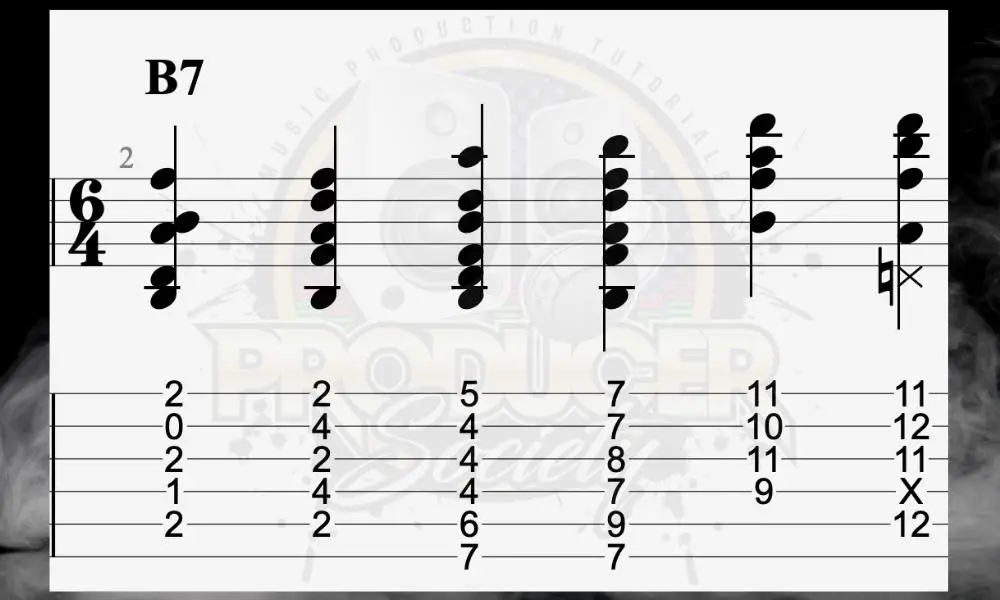
Just like on the piano, as long as the core elements of the B7 chord are there, you can play this chord in a number of different voicings.
Chord voicing simply refers to the order in which you place the notes within a particular chord. It’s kind of like an inversion, but an inversion means you’re switching the root note for another note of the chord. A voicing is a different way of playing the same chord.
B7 On The Second Fret
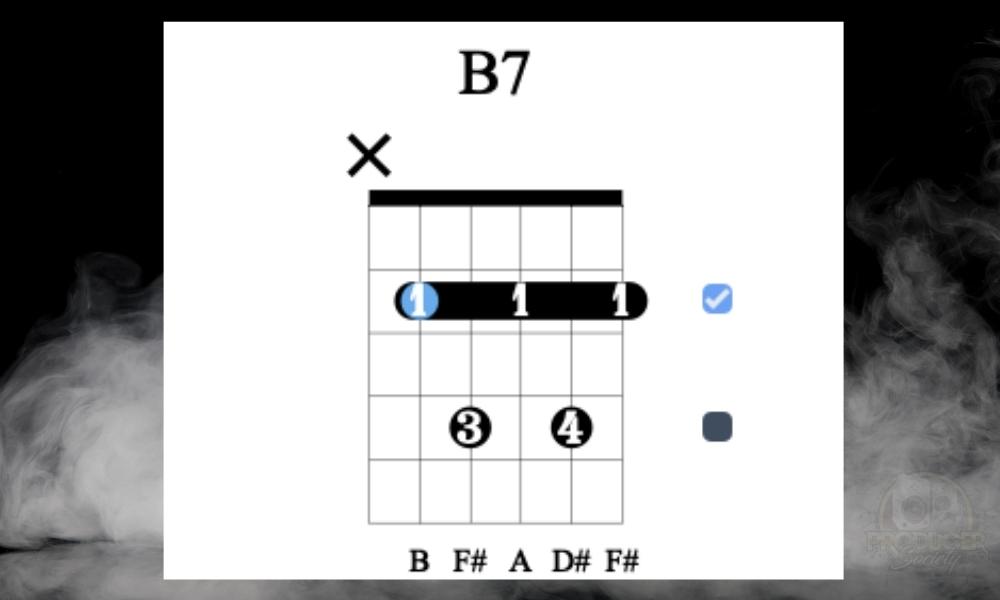
This voicing of B7 involves barring the second fret with your index finger and then placing your ring finger on the fourth fret of the D string, and your pinky finger on the fourth fret of the B string.
This voicing is slightly more challenging to play than the open position. You have to use the tip of your index finger to mute the low E string. The chord tones for this variation, in order, are B, F#, A, D#, and F#.
B7 In The Shape of an Open C7
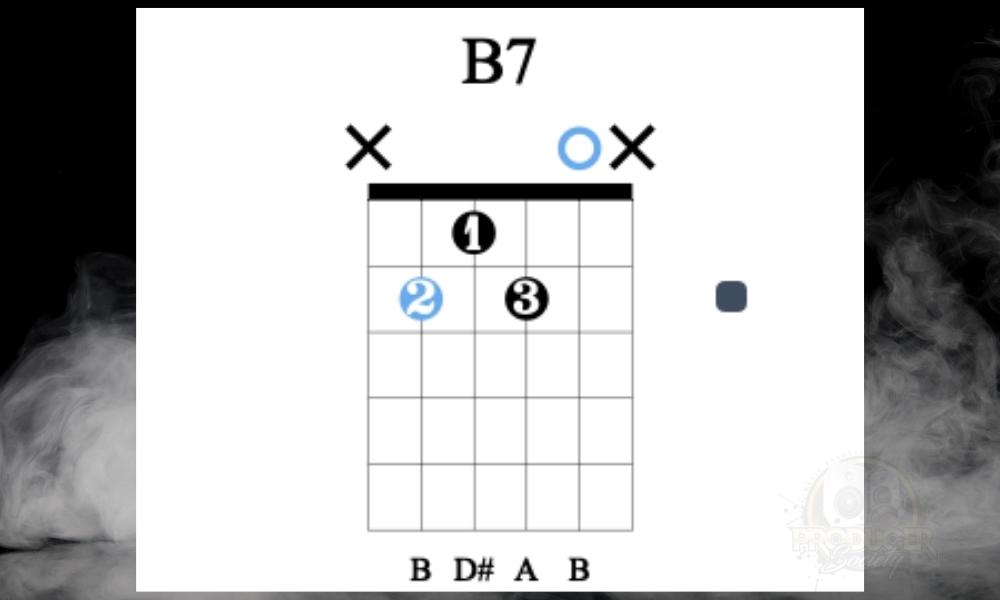
Start with your index finger on the first fret of the D string, your middle finger on the second fret of the A string, and your ring finger on the second fret of the G string.
You’ll use your middle finger to mute the low E string, and gently rest your ring finger on the B and high E strings.
B7 With A Barre Chord on the Seventh Fret
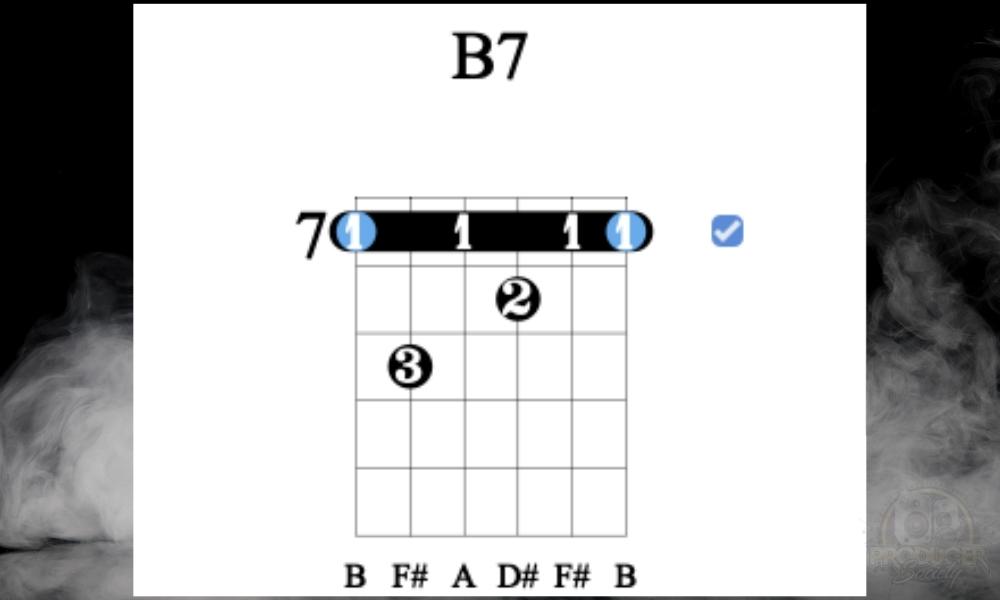
This B7 chord is probably the most standard one out there, although, it’s a little bass-heavy. It’s a movable barre chord.
Your first finger barres the seventh fret, you place your second finger on the 8th fret of the G string, your ring finger on the 9th fret of the A string, and your pinky finger on the 10th fret of the B string.
B7 With An A Played As The Bass Note
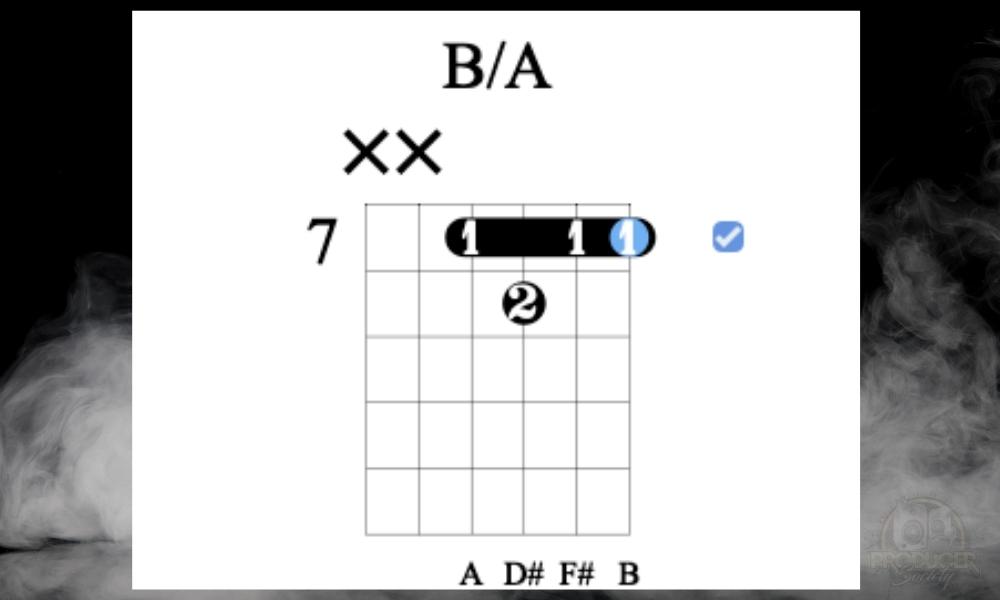
Instead of starting with the B in the bass, this version of B7 has your lowest note as A. You start by barring the seventh fret from the D string to the high E string. You leave the A open to play, and you place your second finger on the eighth fret of the G string.
This version works best when you have a bassist who will still play the low B bass note, thus allowing you to fill the higher harmonic tones.
B7 Without The B Root Note
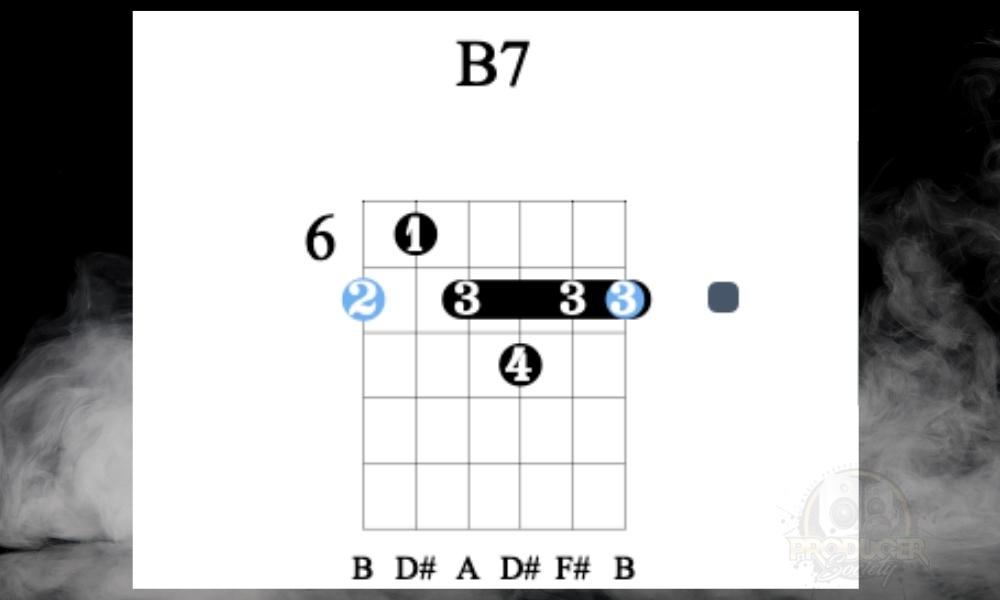
This is a weird B7 chord where you put your 2nd finger on the 7th fret of the low-E string, the first on the 6th fret of the A string, and then your bar across the 7th fret with the third, and then put your 4th finger on the 8th fret of the D string.
You could play it like that, but it’s going to be quite a challenge. How I would play this chord is I would play the first four notes up to the 8th fret of the D-string.
6 Arpeggios of the B7 Chord
Basically, an arpeggio is just when you play all the notes of the chord one at a time rather than all together at once in harmony. You play them melodically, instead of harmonically.
I’ll include 6 arpeggios for you in the section below, but I honestly don’t believe this is the best way to learn a chord.
If you’re new to learning triads and arpeggios, you would probably be better served to learn major and minor triads which I argued in this article.
I’ve really explained at length why this is a great move in that article. However, I know that sometimes you just want to start learning something even if it’s not the right move. For that reason, I’ll just show you the arpeggios you came here to see.
Root Note Starting On The Low E String
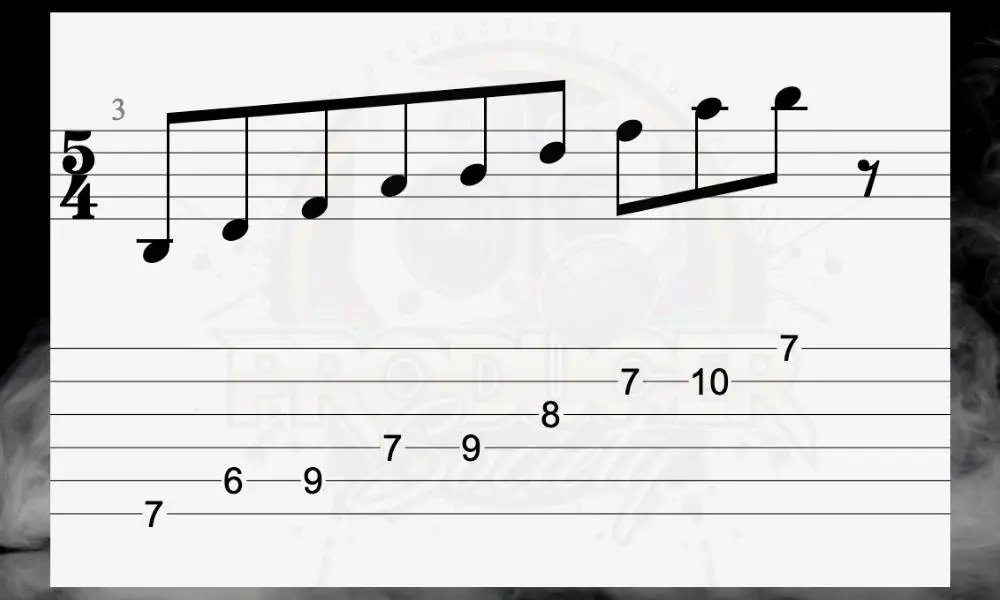
Root Note Starting On The A String
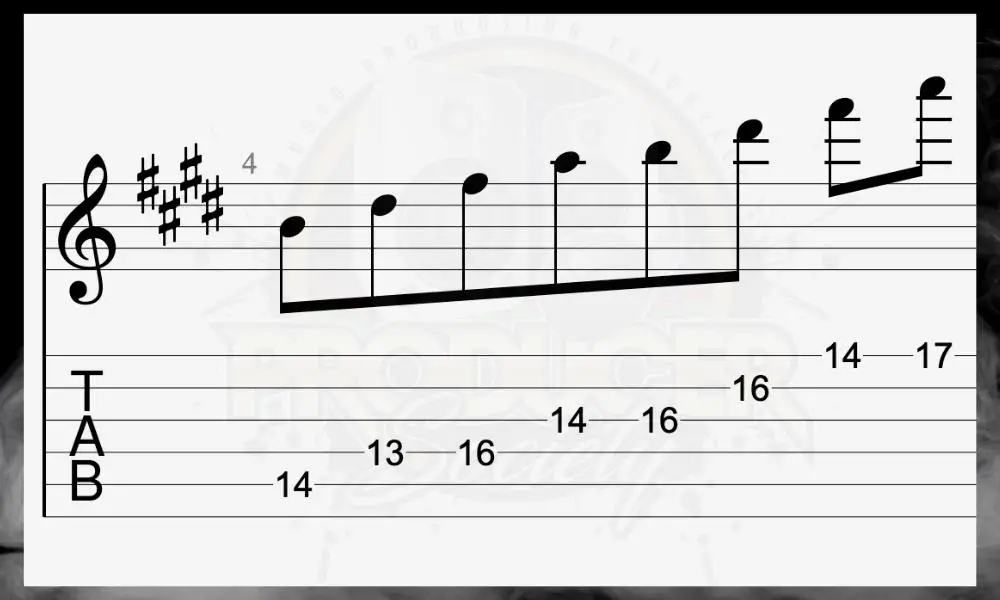
Root Note Starting On The D String
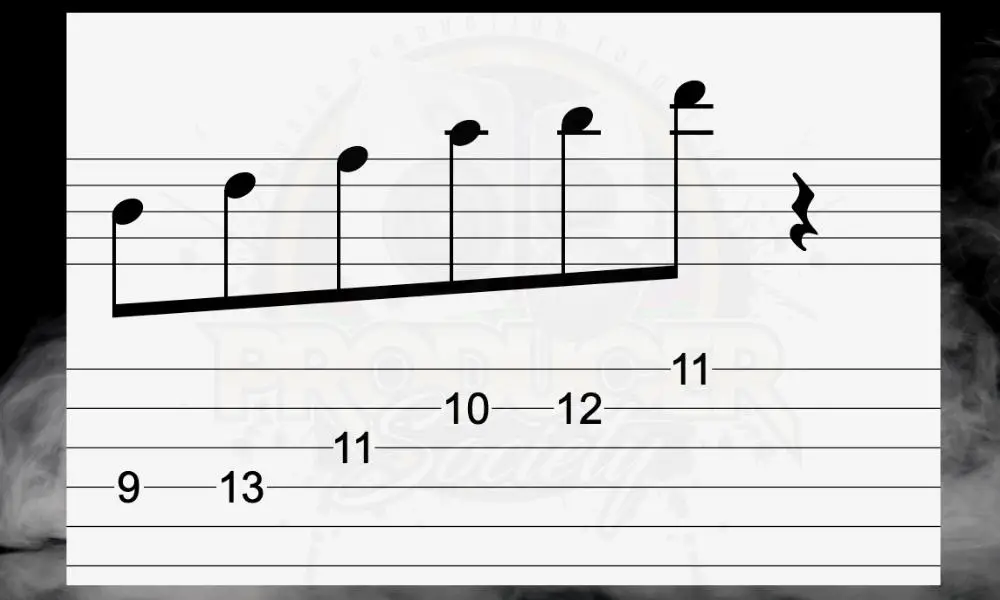
Root Note Starting On The G String
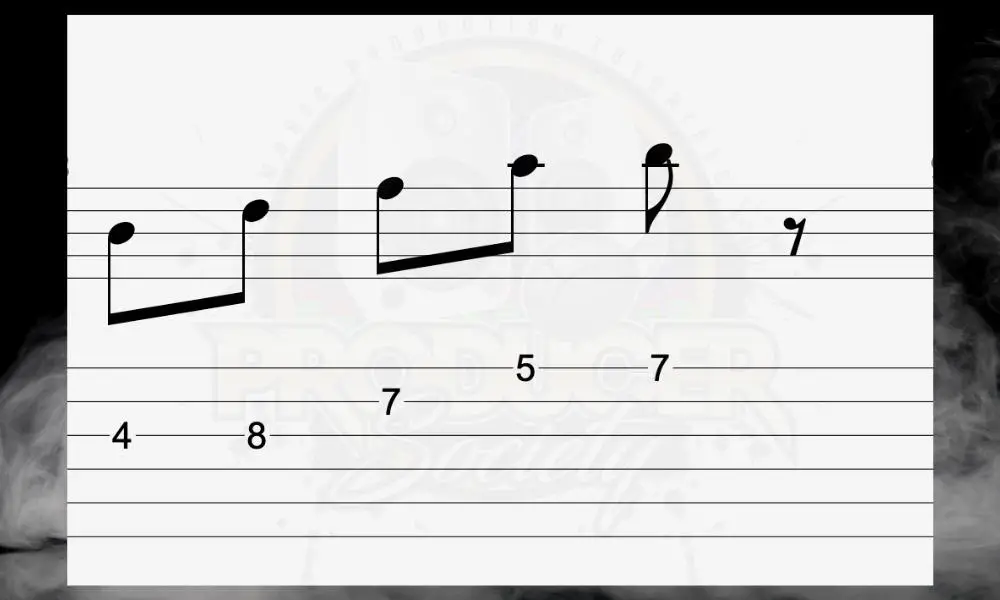
Root Note Starting On The B String
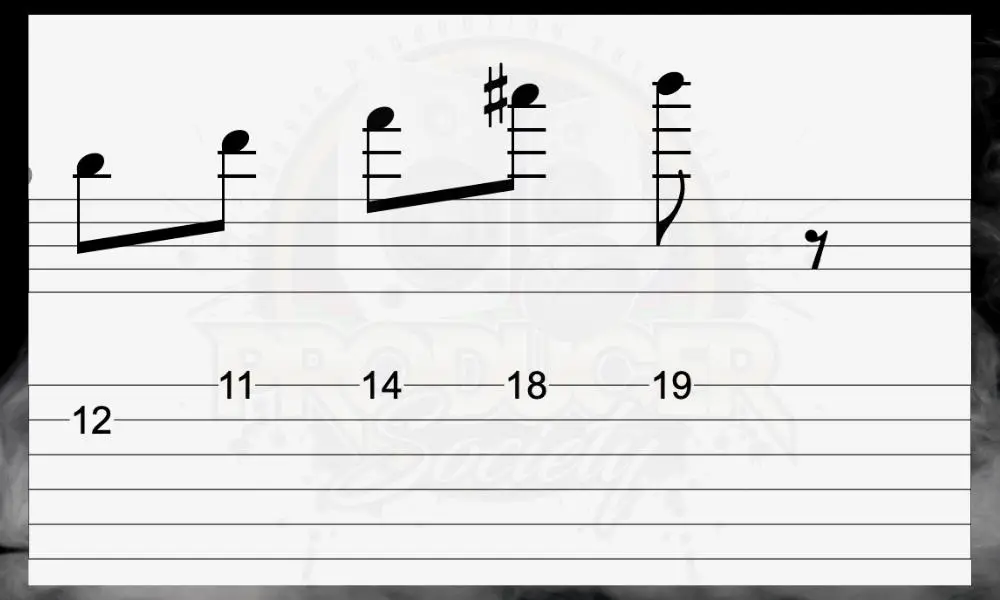
How to Practice the B7 Arpeggio
Generally speaking, the best way to practice a dominant 7th arpeggio, particularly a B7 arpeggio, is to use ii-V-I backing tracks which you can find on YouTube. Go to the channel Quist to find some good ones.
It’s important to remember that while muscle memory is your best friend, ultimately you want to understand what you’re doing rather than just memorize a bunch of scales and patterns.
I wasted years of my time practicing arpeggios and scales and at the end of it, I didn’t have much to show for it. I could’ve just spent that time learning triads, and I would’ve been further along than I am now.
One thing I will say is that it’s wise to try to focus on the names of the chord tones that you’re playing as you scale up and down the arpeggio patterns. It is through these practices, that you will become intimately familiar with the notes all along the fretboard.
B7 Chord Examples In Popular Songs
By now, just from its particular twang, you might have figured that B7 is popular in a variety of blues songs. B7 does feature in a range of genres, though, and here are some examples of famous songs in which you can find this chord.
Songs that undoubtedly go down in my personal rock n roll hall of fame, Metallica’s “Nothing Else Matters” and The Rolling Stones’ “I Can’t Get No Satisfaction” use the B7 chord in similar ways.
Building tension towards an inevitable release of energy, the chord serves to foreshadow the major triad. The versatility of the chord means that you can also find it in blues songs like BB King’s “‘Little Red Rooster, and even David Bowie’s “Starman.”
What Does the B7 Chord Look Like On Piano?
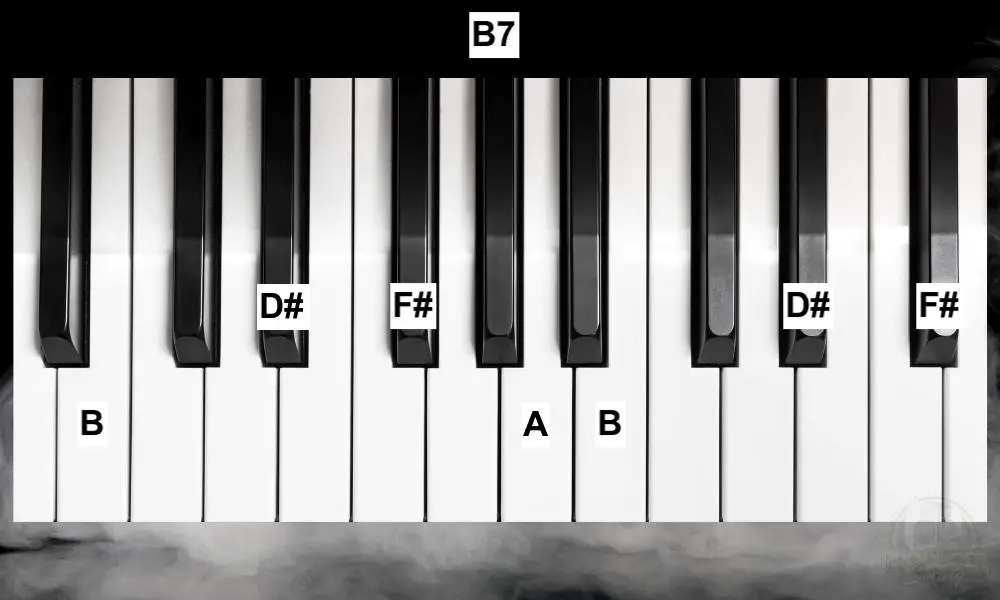
Understanding what a chord looks like on the piano is a great way to visualize the components of the chord tones and their relationship with each other in terms of intervals.
For me, it’s even easier to perceive on piano than on guitar. Just like we discussed earlier, the B7 is merely an extension of the B Major triad. So on the piano, you would play the notes B, D#, F#, and A to finish it off with the flat 7th.
What’s useful about visualizing B7 on the piano is that you can also play around with the inversions of the chord more easily.
Thus, you can familiarise yourself with the different ways that the chord can sound, depending on its voicing. This is one of the ways that I would argue that the piano is superior to the guitar. It’s just way easier to visualize chords and intervals.
Is B7 Major or Minor?
B7 is a major triad with a minor 7th added to the major triad, so it’s neither major nor minor. It’s a major-minor chord – a mixture of the two tonalities. It is called a dominant 7th chord because the fifth note in any scale is known as the dominant scale degree,
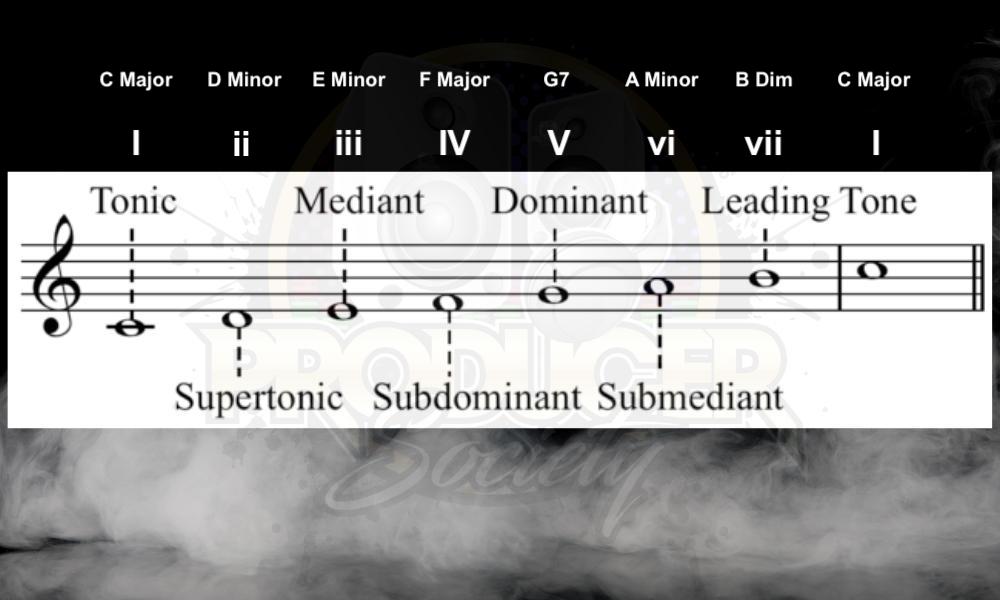
Adding the flat seventh creates tension that leaves the listener expecting a resolution. In a chord progression, the most natural resolution of the B7 chord is to the E major chord.
As I said in my guide to the 12 main chords, all dominant seventh chords are built on the dominant triad of their major scale.
Again, this means that the root note is the fifth note(called the dominant) and the major triad is formed from there. Thus, all dominant seventh chords are major chords.
How Are Dominant 7th Chords Different From Major and Minor 7th Chords?
- Major 7th chords consist of the root, the major third, the perfect fifth, and the major 7th.
- Minor 7th chords consist of the root, the minor third, the perfect fifth, and the minor 7th.
- Dominant 7th chords consist of the root, the major third, the perfect fifth, and the minor 7th.
Important Things to Note About the B7 Chord
1) The B7 Chord is Different From a Minor 7th or Major 7th
There are different kinds of seven chords. B7 is a dominant 7th chord, and it’s important to understand the distinction between this type of chord and the major 7th and minor 7th chord which I already did above.

 Written By :
Written By :